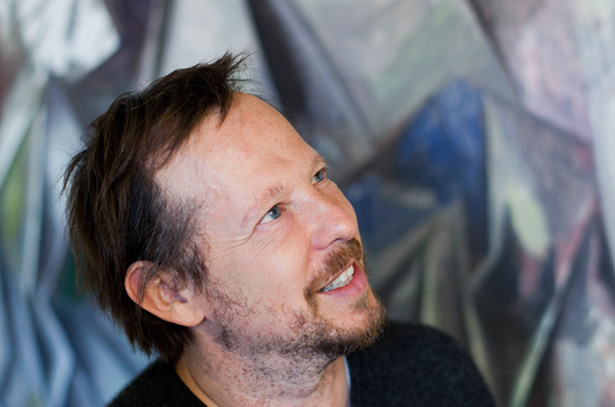
Guillermo Kuitca
18 May - 18 August 2019
Los Angeles
Selected images

The Family Idiot
2019

Retablo
2016

Double eclipse
2013

Missing Pages
2018

The Family Idiot
2018

The Family Idiot
2018
Installation views
Related Content
About the Artist

Guillermo Kuitca
Born in 1961 in Buenos Aires, where he continues to live and work, Argentine artist Guillermo Kuitca draws on a range of iconography, including architectural plans, maps, theaters, musical scores and domestic spaces to produce an oeuvre that explores themes of history, memory, structured absence, sound and silence and the tension between the empirical and abstract. Shifting from gestural mark-making to linear precision, Kuitca’s work mines varied aesthetic styles and histories, and in the latter half of his career, he has achieved significant acclaim for his deployment of a unique cubistoid style that masterfully reconciles abstraction with an illusionist form of figuration.
Exhibiting his first paintings at the age of thirteen at Lirolay Gallery in Buenos Aires, Kuitca quickly expanded his artistic practice by also studying drawing and theater direction. Early paintings from the 1980s incorporated theater imagery, informed by his experience in theater production and often explored themes of history, memory, migration, and domestic and communal spaces, before Kuitca later began to integrate architectural and cartographic subjects into his oeuvre. Having established himself as a leading figure in Buenos Aires’s art scene, in 1991—the same year that he founded his studio program in the city for residencies and young artists called Beca Kuitca—he staged his first solo museum exhibition in the United States, at the Museum of Modern Art in New York. A year later, he achieved further renown with his participation in documenta IX in Kassel, Germany—the first Argentine artist invited to documenta—where he displayed an installation of twenty mattresses.
The cubistoid style that Kuitca developed and that would emerge as the artist’s distinct visual language first appeared in his ‘Desenlace’ series, which he presented at the Argentine Pavilion at the 2007 Venice Biennale. Recalling a cubist aesthetic and eschewing figurative references, these segmented forms and angular patterns acted as the organizing principle of his compositions in this series and have recurred throughout his oeuvre ever since.
Recent, major solo exhibitions of Kuitca’s work include the Museo de Arte Contemporáneo Atchugarry, Uruguay (2023); Kunsthaus Pasquart, Biel, Switzerland (2017); Pinacoteca do Estado de São Paulo, Brazil (2014); The Drawing Center NY (2012); Hirshhorn Museum and Sculpture Garden, Washington D.C. (2010); and Walker Art Center, Minneapolis MN (2010).
Kuitca’s work is represented in distinguished museums and collections worldwide, including the Art Gallery of Ontario, Toronto; Art Institute of Chicago IL; Buffalo AKG Art Museum NY; Centre Pompidou, Paris; Dallas Museum of Art TX; Fondation Cartier pour l’art contemporain, Paris; Hirshhorn Museum and Sculpture Garden, Washington D.C; Kunsthaus Pasquart, Biel, Switzerland; Lille Métropole Musée d’art moderne, d’art contemporain et d’art brut; Los Angeles County Museum of Art CA; The Metropolitan Museum of Art NY; The Morgan Library & Museum NY; Musée d’Art Moderne Grand-Duc Jean, Luxembourg; Museo de Arte Moderno de Buenos Aires; Museo Jumex, Mexico City; Museo Nacional Centro de Arte Reina Sofía, Madrid; Museum of Fine Arts, Boston MA; Museum of Fine Arts, Houston TX; Museum of Modern Art NY; National Gallery of Victoria, Melbourne; Pérez Art Museum Miami, FL; Smithsonian Institution, Washington, D.C; Solomon R. Guggenheim Museum NY; Stedelijk Museum, Amsterdam; and Tate, London.
Current Exhibitions
1 / 9















